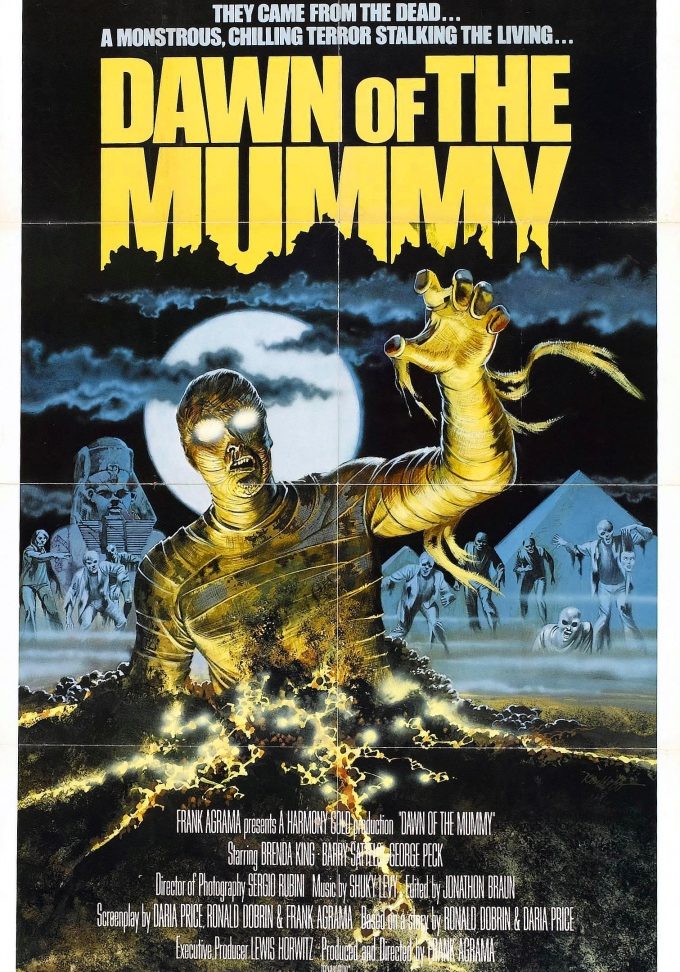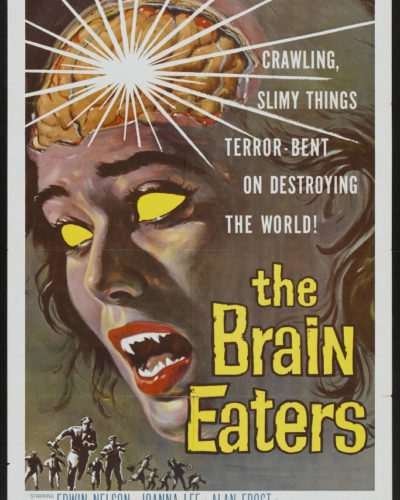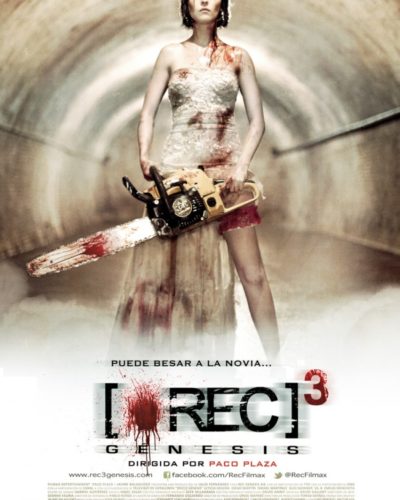Unearthed Terror from the Sands of Time
In the grand pantheon of horror vehicles, “Dawn of the Mummy” emerges from the catacombs to deliver its take on the fear of the ancient undead. Director Frank Agrama’s 1981 foray into the territory of Egyptian cursing places a bet on a tale as old as the pyramids themselves. Set within the sunbaked dunes of the desert, the film unfurls a narrative around a group of fashion models and photographers disrupting the eternal slumber of a pharaoh’s tomb, unwittingly reviving a mummy hungry for vengeance. Its spoiler-free synopsis promises a blending of genres, with touches of slasher sensibilities alongside its supernatural roots.
Pharaoh’s Curse: Setting the Sinister Stage
The allure of the mummy as a horror icon lies in the mix of fascination and terror that ancient Egypt inspires. The film endeavors to construct a horror atmosphere lodged between the surreal serenity of the desert and the claustrophobic confines of a long-forgotten tomb. Suspense is built through prolonged scenes of excavation and the slowly dawning realization of the cast’s peril. Agrama, albeit inconsistently, takes a stab at weaving in an undercurrent of foreboding before the full terror unspools onscreen.
Cinematography: The Visual Sarcophagus
Cinematographic choices are paramount in a film where environment is as much a character as the shambling protagonist itself. The lighting presents as a double-edged sword; it sways between enhancing the mystery of the tomb and exposing the budgetary constraints in outdoor sequences. Color palettes shift from the golden tones of daylight to eerie shades when unrest begins. Camera angles sometimes cleverly portray the vulnerability of the characters but occasionally fall into standard setups which drain out potential chills. While special effects are restrained by their time, there are moments where practical effects invoke the genuine macabre ambience of 80s horror.
Audio Terrors: Whispered Warnings to Scream-Filled Nights
The soundtrack and sound effects often play second fiddle in horror, yet their role in fostering fear is indisputable. “Dawn of the Mummy” employs a score that harkens back to the classic horror cinema with orchestral stings accentuating moments of dread. Sound effects pivot from jarring to subtle, with moaning winds encapsulating the desolation of the desert setting. The film’s sound is sometimes used effectively to echo the mummy’s movements, the silence preceding the storm, though occasionally the timing detracts from the intended shocks.
The Wrathful Dead: Performance and Horror Tactics
Acting Alive Amidst the Dead
Character development and performances in a horror film can form the backbone of its success or the cornerstone of its downfall. Here, the characters tussle with sometimes overwrought dialogue, their believable terror varying from person to person. Actors endeavor to convey a level of authenticity within the outlandish premise, with sporadic instances of real emotive potency amidst generally standard horror fare portrayals.
The Horror Recipe: A Dash of Gore, a Pinch of Panic
Identifying its horror flavor, “Dawn of the Mummy” straddles the line between supernatural dread and gory spectacle. Dismemberment walks hand in dismembered hand with an ancient curse, satiating viewers craving a visual feast. For the era, these elements align with genre conventions, though lacking the refinement of predecessors. The mechanics to frighten are blunt—an amalgam of shock cuts and the repulsive imagery of decay—sometimes squandering the subtlety that could have sharpened the scare.
Moral Mummies: Thematic Ambitions and Final Verdict
In the dusty corridors beneath the narrative’s surface, one might search for deeper themes or societal commentary. However, the film shows little ambition beyond providing baseline horror entertainment, with the mummy’s resurrection serving as more of a plot device than a thematic vessel. This simplicity isn’t inherently a flaw, as the film aligns itself more with popcorn thrills than philosophical musings.
Scream or Yawn: The Effectiveness of “Dawn”
As for the film’s effectiveness as horror, “Dawn of the Mummy” lands in the realm of niche appreciation. While it stops short of presenting a groundbreaking or innovative horror experience, there’s a certain charm in its unabashed embrace of genre staples. Its nostalgia serves more as its haunting ground than outright terror.
Unwrapping the Potential Audience
Tailored more towards a horror enthusiasts audience, those with an appetite for classic horror tropes and a tolerance for dated effects may find enjoyment. Casual viewers might gaze upon the mummy with a mixture of curiosity and bemusement, while gore-seekers will have their moments of satisfaction.
In comparison to other monumental works such as Universal’s “The Mummy” or the atmospheric mastery found in Hammer Horror’s forays into Egyptian curses, “Dawn of the Mummy” is a less polished gem, but a gem nonetheless for the forgiving fan of retro horror.
Conclusion: Wrapping Up the Review
“Dawn of the Mummy” is a time capsule of horror, a film that toes the line between earnest scares and campy delight. Its strengths lie in its setting and moments of effective special effects, while its weaknesses surface in inconsistent pacing and performances that don’t always hit the mark. Recommended with caution for those sensitive to dated portrayals and graphic content, it is ultimately best suited for those who take their horror with a grain of preservation salt. A treasure worth uncovering for some, best left buried for others.




